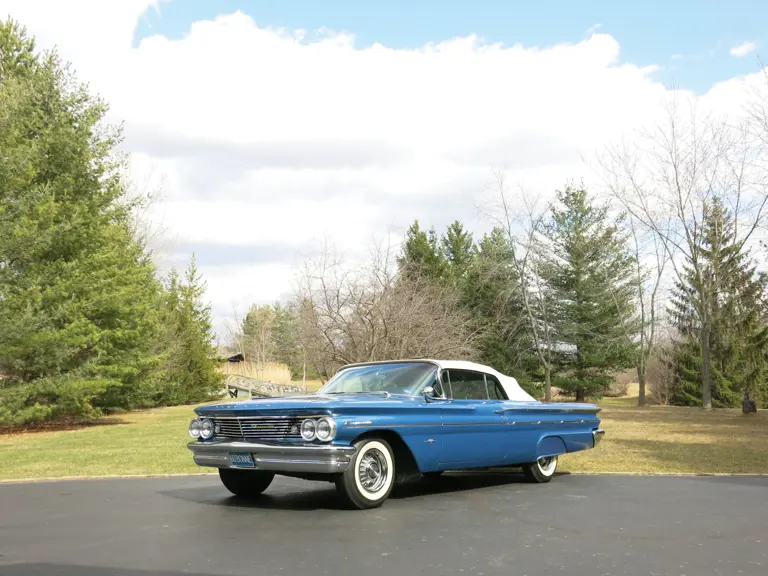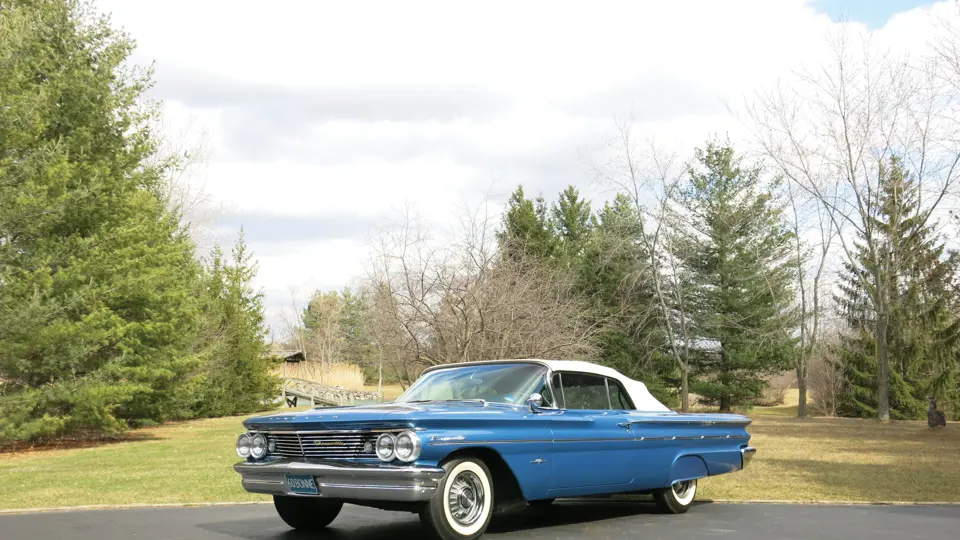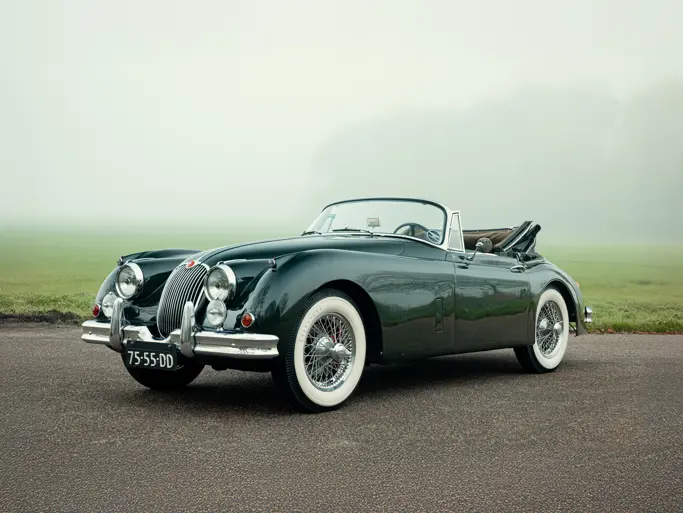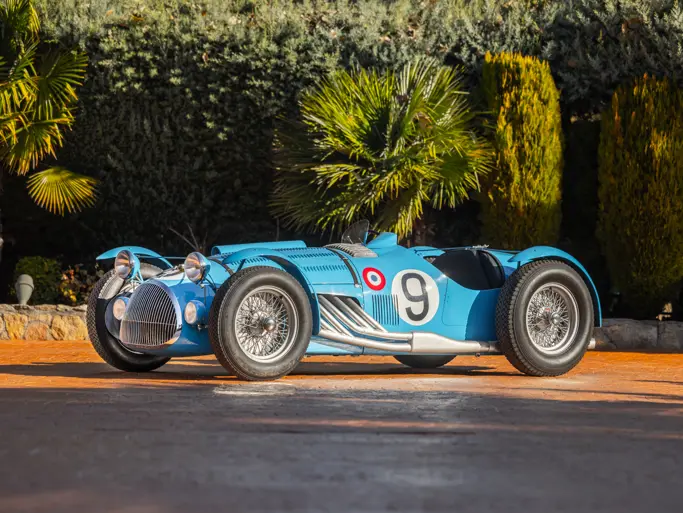With the end of World War II, the production of automobiles resumed and was greeted by eager buyers who anxiously purchased new vehicles for the first time since 1942 when vehicle production ended. The first models available after the war were pre-war models that were slightly updated with minor trim alterations which manufacturers hoped would be convincing enough to the public to appear as new vehicles.
Like the other GM vehicles built, Pontiac’s first post war models were re-incarnations of its prewar offerings until 1949 when its first completely redesigned model was introduced. The new models featured lower and sleeker body lines and more integral fenders which made the vehicles look more modern. These new models set new design precedence and continued to be successful with buyers until 1954, when once again, Pontiac changed the overall design of the car.
The new Pontiac models for 1955 featured updated bodies with an extended rear deck section that emphasized the extra luxury that buyers associated with the Pontiac name. While the new design created interest amongst buyers, the inline eight-cylinder engine under the hood proved to be a negative selling factor as it was no competition for the overhead valve V-8 engines that the buying public was becoming used to.
By the end of 1955, Pontiac introduced a long overdue, new V-8 engine. A new era for Pontiac began in 1956 when “Bunkie” Knudsen took over the reins as Pontiac’s general manager. A new engineering group was assembled, headed by Pete Estes and John Z. DeLorean and were tasked with developing a new line of cars with an emphasis on performance. To promote the new line of performance Pontiacs, a racing program was developed and a new, optional extra horsepower engine, like those used on the team’s racing cars, was made available to potential Pontiac buyers. The new engine was equipped with dual four-barrel carburetors and a full-race camshaft. In 1957, another new engine was offered that was fuel-injected and this engine was only available on the Bonneville series convertibles.
By 1957, Pontiac was offering vehicles in four different models. The least expensive model was the Chieftain line which was followed by the Super Chief line, the Star Chief line, and the Star Chief Custom line which was the most expensive of Pontiac’s offerings that year. The Star Chief Custom line differed from its lower priced siblings with deluxe two-toned interiors and extra exterior trim features. There were four vehicles offered in the Custom line: a four-door sedan, a four-door hardtop, a two-door hardtop, and the top-of-the-line vehicle; a Bonneville convertible. In 1958, the name Bonneville would now represent the top-of-the-line Pontiac models.
Starting with the 1959 models, a new marketing strategy was adopted to make Pontiac into a “sporty and youthful car” that would appeal to younger buyers. During the next couple of years, the cars would become wider and lower and have available high performance engines. Pontiac’s continued success in the NASCAR racing series helped to promote this new strategy and increase sales. Pontiac would continue to build and sell low to medium priced cars with a variety of trim and mechanical options throughout 1960s.
For the 1960 model year, the Pontiac Bonneville line consisted of the Series 27 and the Series 28. The Series 27 was designated only for the station wagon body style while the Series 28 contained three body styles: a four-door Vista hardtop sedan, a two-door hardtop and a convertible. The convertible had a base price of 3,478 and approximately 17,000 were built and sold.
This extremely desirable Bonneville convertible has the high performance, Tri-power 389-cid engine. It also has the rare and desirable bucket front seat option with the matching center console.
This vehicle is an older cosmetic restoration on what appears to have always been and solid and well-preserved original vehicle. While not a fresh restoration, the car presents extremely well, inside and out. The body panels are excellent and fit well to each other. The two doors, decklid and hood all align well and show no signs of damage, repair or neglect. The gaps and margins are even throughout. The exterior medium metallic blue finish is older and is in good to very good condition. There are some signs of aging and wear to the paint, but it is generally presentable and attractive. The chrome plated trim items show some wear and oxidation, but are generally clean and match the rest of the vehicle. The stainless trim is in comparable condition. Underneath, the car appears very solid with good door bottoms, floor pans, trunk pans and inner rockers.
The interior has been restored at the time of the restoration in the proper tri-toned blue color combination and is in very good condition. The dashboard and all of its instruments have been properly restored and today are in excellent condition.
The chassis is clean and shows the expected cosmetic signs of use. Most of the chassis components have been undercoated. All of the chassis fittings are correct and the chassis and suspension components show no signs of neglect or abuse, indicating that this vehicle was likely very well preserved prior to its restoration. The engine bay shows extremely well and the correct, V-8 engine is clean and but not recently detailed. The engine retains its original Tri-power carburetion system with proper air cleaners. The firewall appears to be in original paint and still has what appears to be original GM paint stamping marks.
This vehicle has all of the desirable, factory options including automatic transmission, power top, power steering, power brakes, bucket seats with center console, power windows, Wonder Bar radio, eight-lug wheels, clock, fender skirts, dual rearview mirrors, clear plastic steering wheel and heater. This example also has its correct Fisher Body number tag affixed to its cowl.
Overall, this is a superb example of one of the most desirable convertible Pontiac models built during the 1960s. Its value and desirability are enhanced by its desirable Tri-power engine and bucket seat interior option. Although an older restoration, it has been maintained and today remains in very good overall condition.



 | Auburn, Indiana
| Auburn, Indiana


